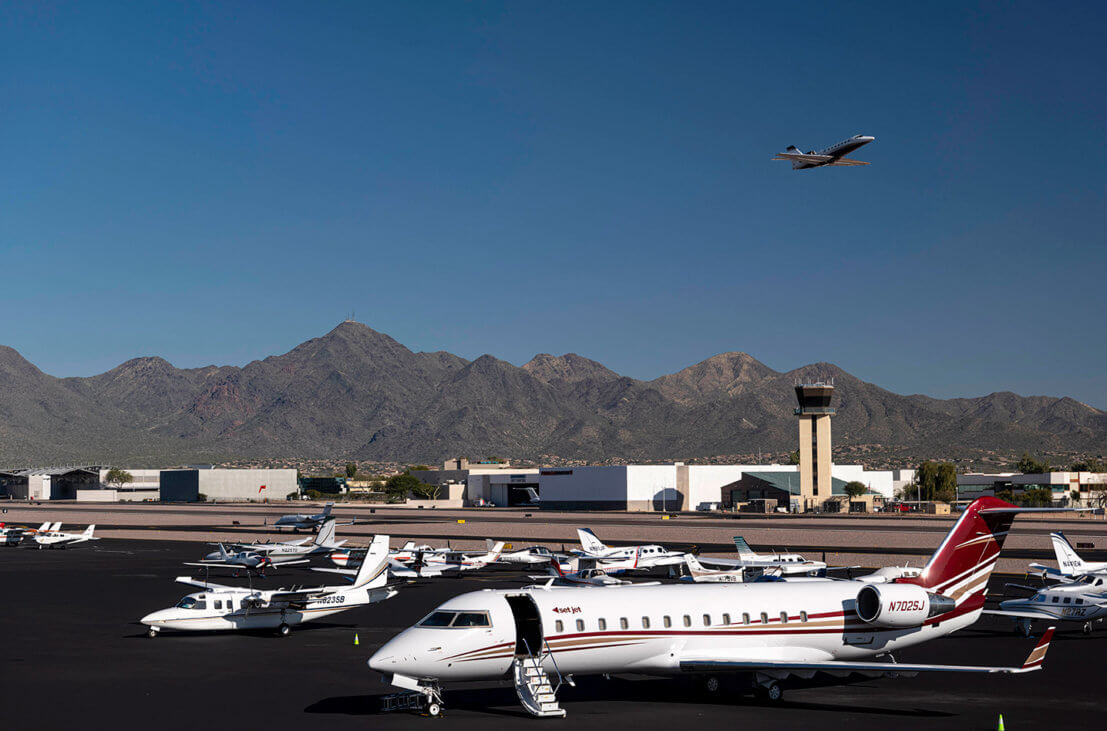
This year’s reauthorization of the FAA will be front and center for business aviation, said some of the industry’s most prominent advocates during the recent NBAA News Hour webinar: The Business Aviation Industry – From the Top Down, a Thought Leadership edition of the webinar sponsored by Mesinger Jet Sales.
FAA reauthorization is a critical piece of legislation, as it serves as a mission guide for the regulator over a five-year period. The 2018 reauthorization, for example, contained important measures for business aviation that promoted workforce development, improved the regulation and certification of unmanned aircraft systems and guaranteed fair and balanced access to the National Airspace System for all aviation users.
“This year is particularly important because the FAA’s authority to act is going to expire on Oct. 1,” said NBAA President and CEO Ed Bolen. “This gives our community an opportunity to promote the forward movement of general aviation and work collectively to stop any bad ideas that would impede our ability to grow, like artificial barriers to airports or a degrading of our safety.
“We will continue to promote safety, workforce development, and protecting the privacy of people getting on general aviation aircraft,” he added. “We have already started, and every industry association is pulling together to build awareness of the issues important to our community.”
FAA reauthorization was also top-of-mind for the other two panelists, General Aviation Manufacturers Association President and CEO Peter Bunce and National Air Transportation Association President and CEO Curt Castagna, C.M., who, respectively, called for reduced bureaucracy at the FAA and a rational approach to reducing the use of leaded fuel.
The need for a permanent FAA administrator also was discussed. Billy Nolen was appointed as acting administrator in April 2022.
Staffing will also be a critical focus for the business aviation community in the coming year, noted Castagna.
“Workforce development is a challenge for all of us at all levels from the federal government down,” he said. “There is a strong focus on looking for talent outside the industry and finding ways to create new opportunities for today’s workforce. We’ve also got to look for on-ramps for non-traditional jobs.
“We all understand pilots, air traffic controllers, mechanics and flight attendants, but how do we go out to our educational system and look for people for all the other jobs available in our industry, from architecture to engineering to administration?,” he added.
While other industries are bracing for a possible recession sometime this year, business aviation is well-prepared for such a disruption, noted Bunce.
“In previous years, we’d have a cycle where we ramp up employment and then hit a recession, and suddenly we have layoffs. This time, though, we have been working with constraints in both the supply chain and the workforce, and that’s put an artificial restriction on the industry that didn’t allow us to ramp up production as rapidly as demand,” he explained. “Look at the book-to-bill ratios and backlogs. We are also a much smarter industry than we were coming out of the Great Recession, and the longer-term projection for our industry is extremely healthy.”
For Bolen, maintaining the U.S.’s leadership role in aviation is a main goal for 2023.
“Since 1903, the U.S. has led every aspect of aviation, but we are in a global marketplace and new technologies are coming forward,” he said. “It has never been more important for us to make sure that there’s a broad-based understanding of our industry and its unique attributes and benefits to society.
“We also must find ways to safely and efficiently get products like electric aircraft to the market that show we are the best in the world.”


 International Business Aviation Council Ltd.
International Business Aviation Council Ltd.